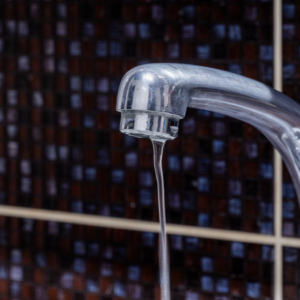A sump pump is a small but powerful device installed in the lowest part of a home, typically in a basement or crawl space, that helps prevent flooding and water damage. It works by detecting rising water levels in a specially constructed pit and pumping that water out of your home to a designated drainage area. This prevents groundwater from seeping into your foundation and causing mold, mildew, and costly structural damage. Whether you’re dealing with heavy rains, a high water table, or a plumbing leak, a sump pump is your home’s first line of defense against water intrusion.
How a Sump Pump Works
The operation of a sump pump begins with water collecting in the sump pit. A sensor, typically a float switch or a pressure switch, detects the rising water level. When the water reaches a preset point, the sensor signals the electric motor to turn on. The motor then powers an impeller—a fan-like mechanism—that forces water up through a discharge pipe. That water is directed away from the foundation, usually into a storm drain, dry well, or sloped area of the yard that allows for safe drainage.
The discharge pipe usually includes a one-way check valve, which prevents the pumped water from flowing back into the sump pit once the motor shuts off.
Types of Sump Pumps
Submersible Sump Pump
A submersible sump pump sits directly in the sump pit and operates underwater. These pumps are generally quieter and more powerful, making them ideal for homes with significant water intrusion or deeper pits. Since they’re sealed and designed for underwater use, they are less prone to overheating.
Pedestal Sump Pump
A pedestal sump pump has a motor mounted above the sump pit, with only the impeller submerged. These are easier to maintain because the motor stays dry, but they can be noisier and less powerful. They’re often used in smaller pits or homes that experience less severe flooding.
Power Sources and Backup Systems
Standard sump pumps are powered by your home’s electricity. But during storms—when you most need your sump pump—power outages are common. For this reason, many homeowners install backup systems.
A battery backup sump pump kicks in if the main pump fails or if the power goes out. These are ideal for homes in storm-prone areas. Another option is a water-powered backup pump, which uses your home’s water pressure to eject floodwater without needing electricity or batteries. While less common, these can be a dependable second line of defense.
Installing a Sump Pump
Installation begins with digging a sump pit in the lowest point of your basement or crawl space. This pit should be deep and wide enough to hold water and accommodate the pump. The pump is then placed into the pit, with the float switch or pressure sensor positioned properly to detect water accurately.
The discharge pipe is attached to the pump and routed out of the home. A check valve is usually installed in the pipe to prevent water from backflowing into the pit. It’s crucial that the outlet drains away from your foundation to avoid recycled flooding. Finally, the unit is plugged into a ground fault circuit interrupter (GFCI) outlet to prevent electrical hazards.
Maintaining a Sump Pump
Routine maintenance ensures your sump pump works when you need it most. At least once every few months, pour water into the sump pit to make sure the pump turns on and discharges properly. Clean out any debris or sediment in the pit, especially around the float switch, which can get stuck.
You should also check the discharge line for clogs or freezing in the winter, and test the check valve for function. If you have a battery backup, test it regularly and replace the battery every 3–5 years.
Common Sump Pump Issues
Like any mechanical device, sump pumps can fail. If the pump doesn’t activate when water rises, the float switch could be stuck or the unit might have lost power. A pump that runs continuously may be undersized, have a faulty switch, or be dealing with excessive water.
Short cycling (frequent on-and-off operation) can indicate a pit that’s too small or a pump that’s too powerful for the job. You may also notice strange noises, vibrations, or a complete lack of drainage—all of which require attention.
When to Replace a Sump Pump
Most sump pumps last between 7 to 10 years, depending on usage and maintenance. Warning signs that you may need a replacement include:
- Unusual noises or grinding sounds
- Failure to activate or shut off
- Visible rust or damage
- Frequent cycling without effectively removing water
If you notice any of these issues, it’s wise to have your sump pump inspected before the next big storm rolls through.
Conclusion
Sump pumps play a vital role in protecting your home from water damage. They automatically remove groundwater before it floods your basement, keeping your foundation dry and your family safe. Whether you’re installing a new system, upgrading an old one, or considering a backup plan, having a reliable sump pump is a smart investment for long-term home health.
If you’re unsure whether your sump pump is up to the task—or need help choosing, installing, or maintaining one—Clarksville Plumbing is here to help. Our experts can inspect your setup, recommend the best options for your home, and ensure you’re protected year-round. Contact Clarksville Plumbing today to keep your home high and dry.




